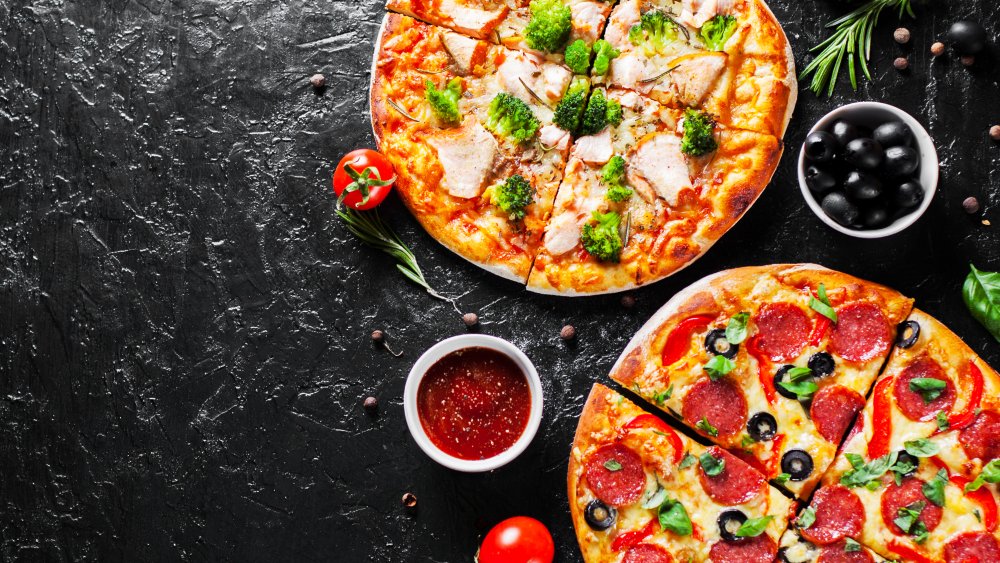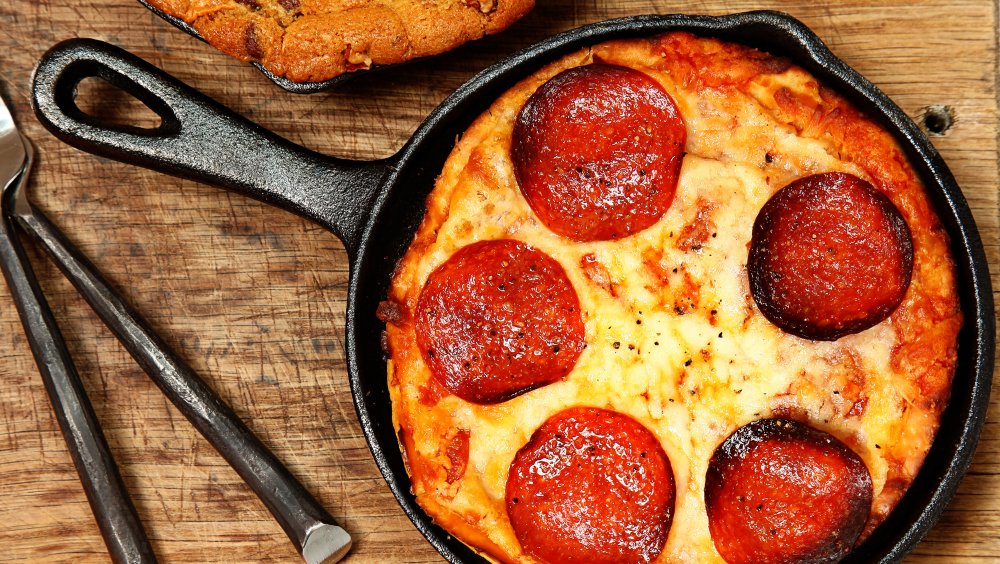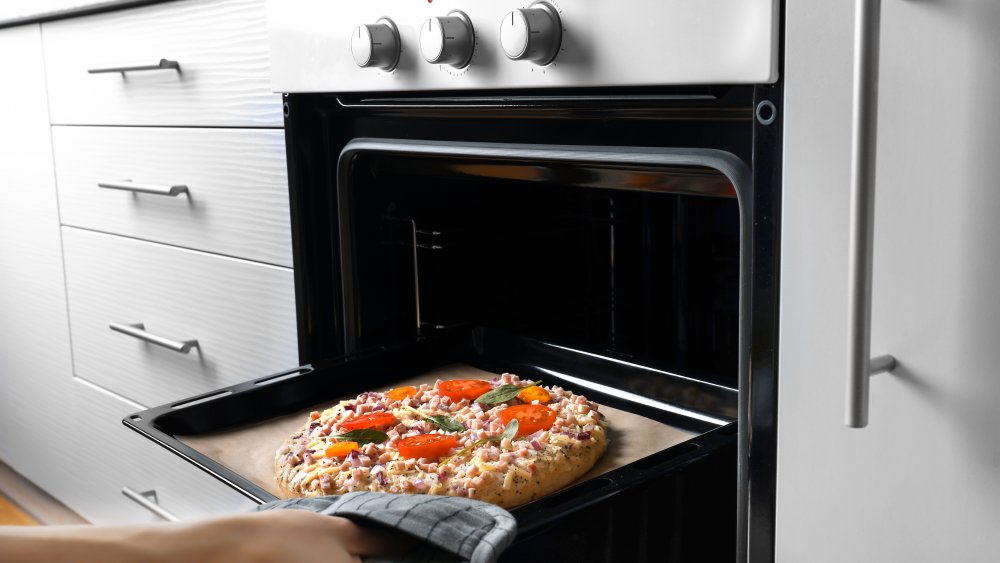You Should Never Reheat Pizza In The Microwave. Here's Why
Unlike instant ramen, or those cute frozen vegetables you can steam inside the bag, pizza is not meant for the microwave. The end result always manages to disappoint: soft and chewy crust, encased in a spillage of cheese, while the oil slides in every possible direction. What's the point? If you're going to eat leftover pizza at 10 a.m., you might as well get some joy out of it, right?
You're not just imagining that microwaved pizza is worse. Sticking your pizza in the microwave actually melts the sugar molecules in the dough. Those molecules harden again when the slice cools down. In other words, that crusty-yet-soft texture of fresh pizza crust is long gone after you reheat pizza in the microwave, as is the quality of the cheese. You might as well have eaten it cold.
There are hacks, of course, that claim to offset the sogginess that can ensue in the microwave. Domino's suggests adding a half-filled cup of water into the microwave, though even the pizza chain can't guarantee it will keep your slice crispy (via Domino's Newsroom). But we strongly urge you to avoid the microwave altogether, especially when there are several other ways to revive your pizza back to its golden-brown, crusty goodness.
Out of the microwave, into the skillet
Anthony Falco from Roberta's Pizza opts for the skillet when it comes to reheating. Placing the slice on medium-low heat for a couple of minutes will revive the crispiness. Then, rather ingeniously, he drizzles in several drops of water — not into the pizza, but onto the pan, before covering the skillet altogether with a lid. The water creates a cloud of steam, melting the cheese, according to Food 52. No more awkward, half-cold, half-blazing-hot slices of microwaved pizza. You don't have to trust Falco, but after all, he does make a living as an "international pizza consultant" (via Vox).
Don't be afraid to get experimental. Some cooks suggest covering the pizza with a piece of foil as it cooks on the skillet (via The Kitchn). According to Food 52, Mark Bello, a head pizza instructor, drapes foil over the day-old slice, and something tells us he knows a thing or two about good pizza.
Into the oven
We're not going to lie: Reheating pizza in the oven is a longer process. However, if you're heating up multiple slices at once for friends (or all for yourself; that's fine), the oven might be worthwhile. If you're going the oven route, it's crucial to wait for your oven to heat up fully before sliding your slices in. According to Taste of Home, it's best to flatten a piece of foil on the bottom of your tray, then pop the tray and foil into a 375 degree oven for a few minutes: just to provide more heat for the bottom of the pizza. Finally, stick the slices in on an already-hot pan. You won't be sorry, and you'll feel (sort of) like you made an effort to cook.
Strangely enough, the methods for reheating pizza don't stop there. Cold pizza is a tribulation as old as time, and self-appointed pizza scientists have experimented using toaster ovens, air fryers, and outdoor grills. According to staff at The Kitchn, who tried five different pizza-reheating methods, the skillet method emerged as the "clear winner." The microwave? Not so much.


